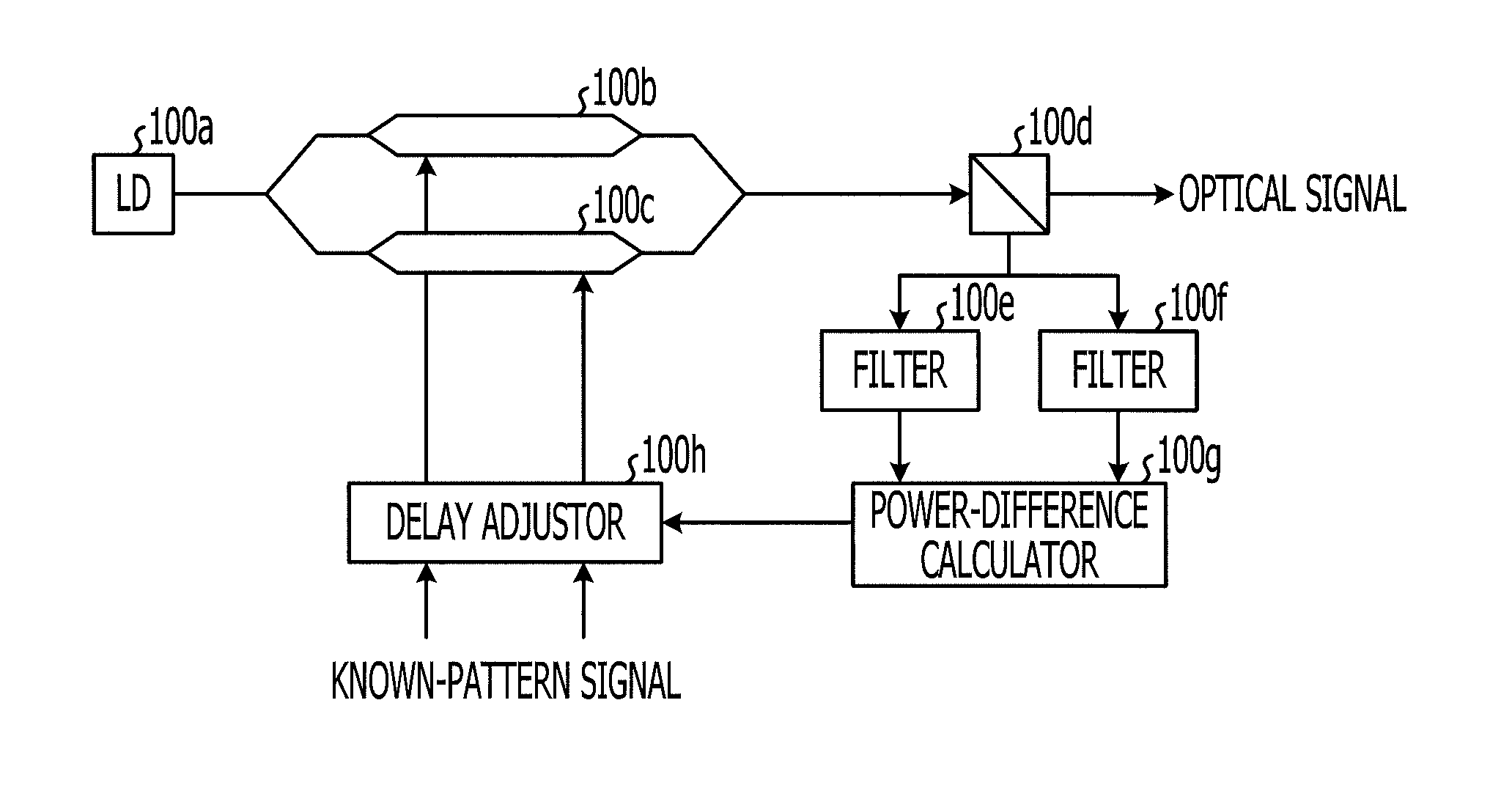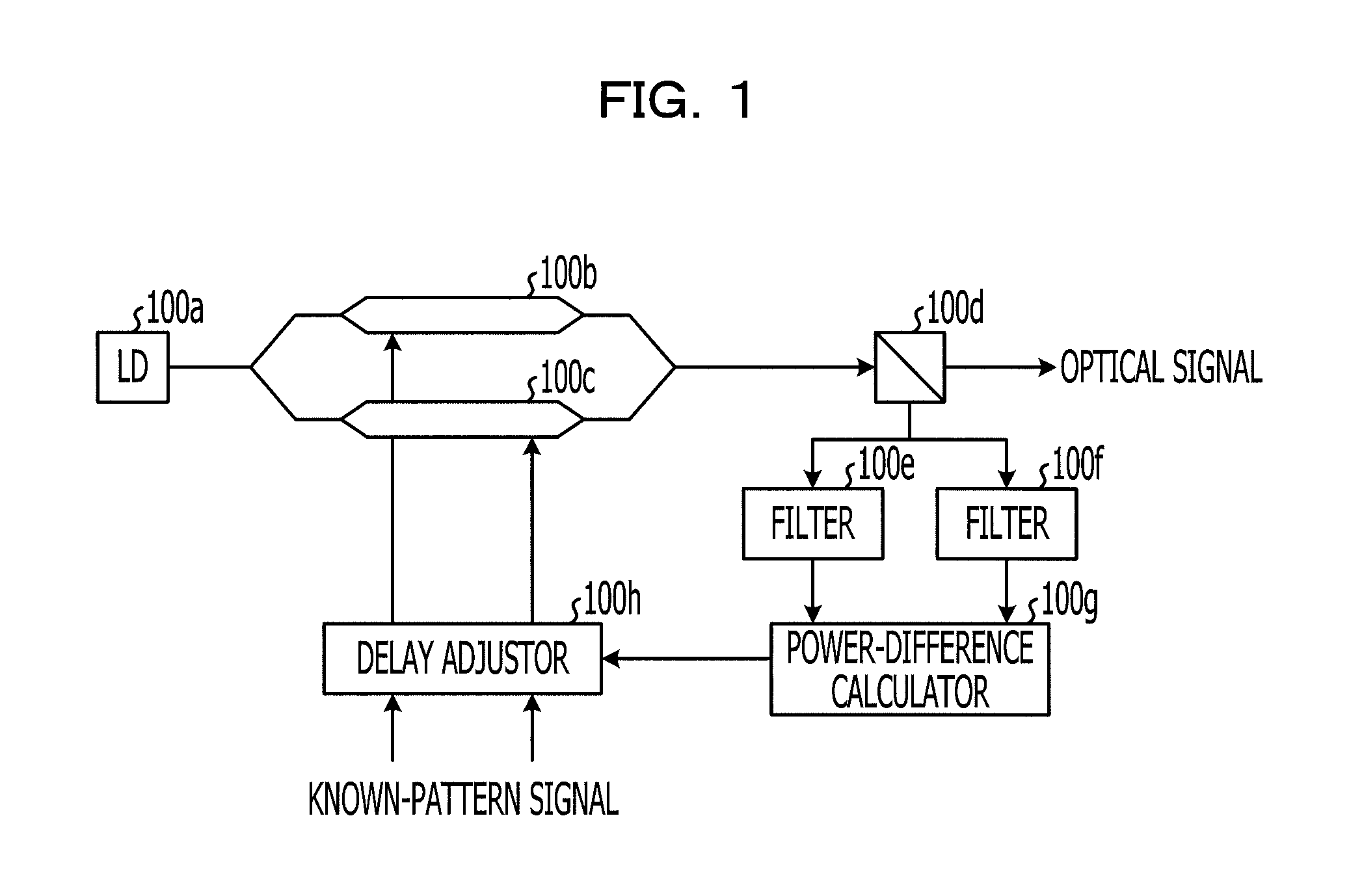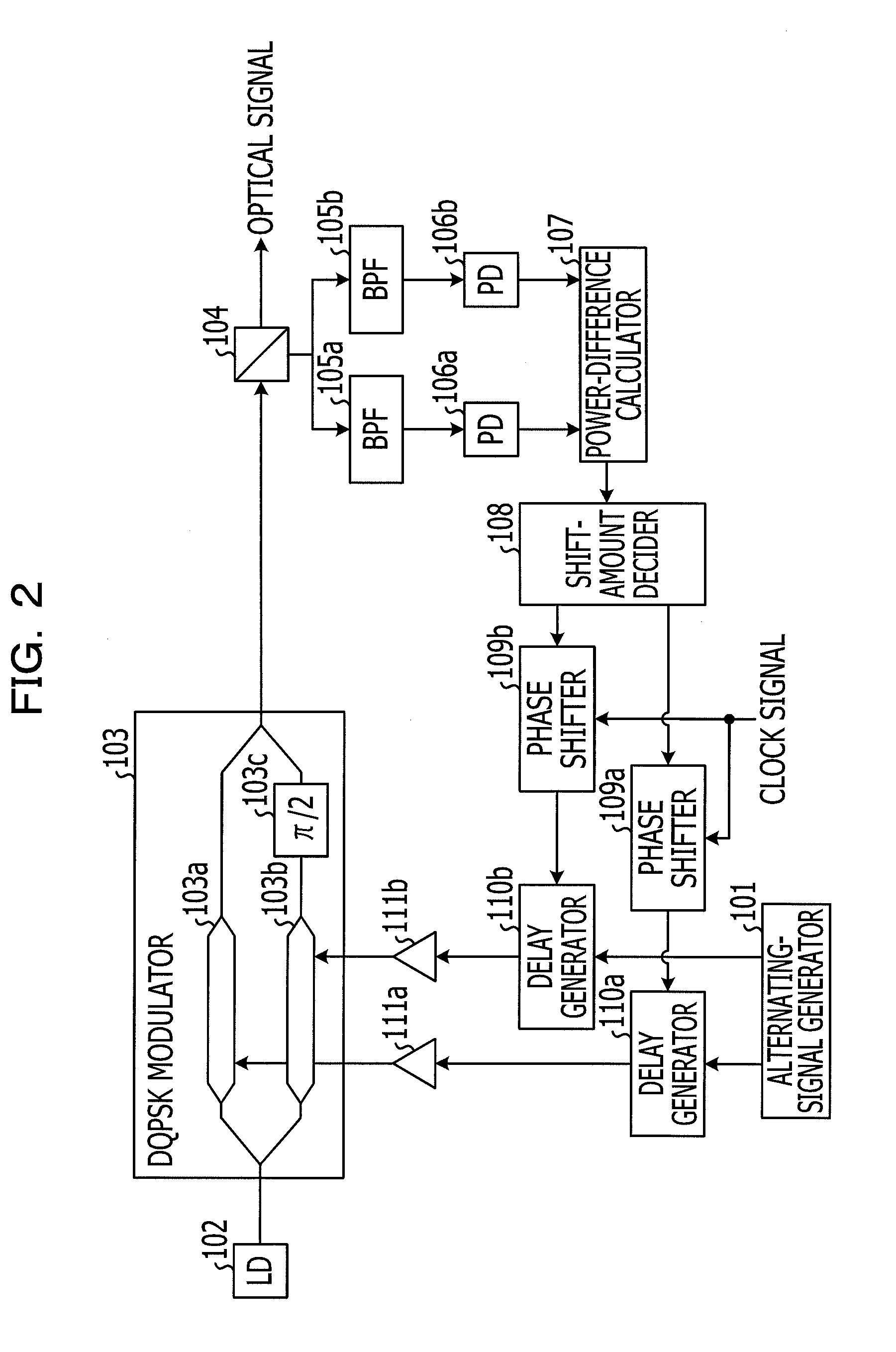Optical modulation apparatus and optical modulation method
a technology of optical modulation apparatus and optical modulation method, which is applied in the direction of electrical apparatus, transmission monitoring/testing/fault-measurement system, instruments, etc., can solve the problems of optical transmission signal degradation, optical noise accumulation, and spectral degradation caused by optical filters and signal degradation, so as to suppress the degradation of optical signals
- Summary
- Abstract
- Description
- Claims
- Application Information
AI Technical Summary
Benefits of technology
Problems solved by technology
Method used
Image
Examples
first embodiment
[0046]FIG. 1 is a block diagram illustrating a configuration of an optical modulation apparatus according to a first embodiment. The optical modulation apparatus illustrated in FIG. 1 includes an LD 100a, a first modulator 100b, a second modulator 100c, an optical coupler 100d, filters 100e and 100f, a power-difference calculator 100g, and a delay adjustor 100h.
[0047]The LD 100a serving as a light source emits light of a predetermined wavelength. The first modulator 100b superposes a signal of a known pattern (hereinafter, referred to as a known-pattern signal) on a first component of the light emitted from the LD 100a, whereas the second modulator 100c superposes a known-pattern signal on a second component of the light emitted from the LD 100a. For example, an alternating signal having alternately repeated “0” and “1” serves as one example of the known-pattern signal. When the first modulator 100b and the second modulator 100c are included in a DQPSK modulator for performing DQPS...
second embodiment
[0055]FIG. 2 is a block diagram illustrating a configuration of an optical modulation apparatus according to a second embodiment. The optical modulation apparatus illustrated in FIG. 2 includes an alternating-signal generator 101, an LD 102, a DQPSK modulator 103, an optical coupler 104, BPFs 105a and 105b, PDs 106a and 106b, a power-difference calculator 107, a shift-amount decider 108, phase shifters 109a and 109b, delay generators 110a and 110b, and DRVs 111a and 111b. Additionally, the DQPSK modulator 103 includes an I-arm modulator 103a, a Q-arm modulator 103b, and a phase shifter 103c.
[0056]The alternating-signal generator 101 generates an alternating signal in which “0” and “1” are alternately repeated. The alternating-signal generator 101 outputs the resulting in-phase alternating signals to the delay generators 110a and 110b. The alternating-signal generator 101 generates the alternating signal at the time of initial booting of the optical modulation apparatus and supplies...
third embodiment
[0081]In a third embodiment, higher-side frequency components and lower-side frequency components are acquired with etalon filters having periodical passbands instead of band-pass filters.
[0082]FIG. 8 is a block diagrams illustrating a configuration of an optical modulation apparatus according to the third embodiment. In FIG. 8, like reference characters designate the same or similar components illustrated in FIG. 2 to omit a description thereof. The optical modulation apparatus illustrated in FIG. 8 includes etalon filters 301a and 301b instead of the BPFs 105a and 105b of the optical modulation apparatus illustrated in FIG. 2.
[0083]The etalon filters 301a and 301b have passbands of the same period called a free spectral range (FSR). Since the etalon filters 301a and 301b have the same FSR but different peak frequencies of the passbands, the etalon filters 301a and 301b have the passbands complementary to each other. For example, as illustrated in FIG. 9, one of the etalon filters ...
PUM
| Property | Measurement | Unit |
|---|---|---|
| frequency | aaaaa | aaaaa |
| center frequency | aaaaa | aaaaa |
| power | aaaaa | aaaaa |
Abstract
Description
Claims
Application Information
 Login to View More
Login to View More - R&D
- Intellectual Property
- Life Sciences
- Materials
- Tech Scout
- Unparalleled Data Quality
- Higher Quality Content
- 60% Fewer Hallucinations
Browse by: Latest US Patents, China's latest patents, Technical Efficacy Thesaurus, Application Domain, Technology Topic, Popular Technical Reports.
© 2025 PatSnap. All rights reserved.Legal|Privacy policy|Modern Slavery Act Transparency Statement|Sitemap|About US| Contact US: help@patsnap.com



